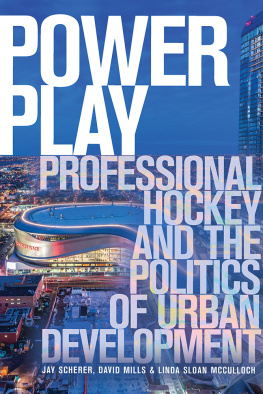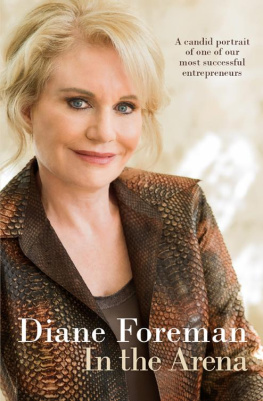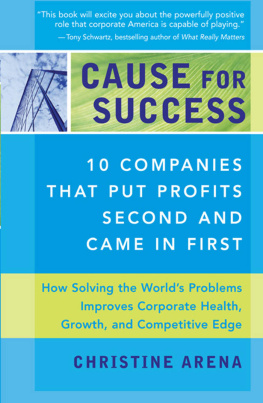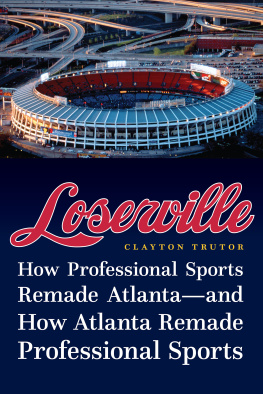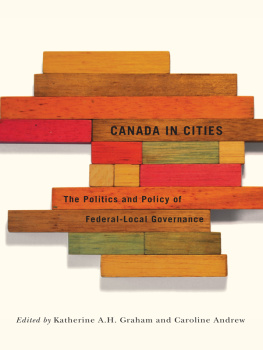

Published by
The University of Alberta Press
Ring House 2
Edmonton, Alberta, Canada T6G 2E1
www.uap.ualberta.ca
Copyright 2019 Jay Scherer, David Mills, and Linda Sloan McCulloch
LIBRARY AND ARCHIVES CANADA CATALOGUING IN PUBLICATION
Title: Power play : professional hockey and the politics of urban development / Jay Scherer, David Mills, and Linda Sloan McCulloch.
Names: Scherer, Jay, 1975- author. | Mills, David, 1952- author. | McCulloch, Linda Sloan, 1960- author.
Description: Includes bibliographical references and index.
Identifiers: Canadiana (print) 20190174730 | Canadiana (ebook) 20190174749 | ISBN 9781772124934 (softcover) | ISBN 9781772124941 (EPUB) | ISBN 9781772124958 (Kindle) | ISBN 9781772124965 (PDF)
Subjects: LCSH: ArenasAlbertaEdmontonFinance. | LCSH: ArenasEconomic aspectsAlbertaEdmonton. | LCSH: City planningAlbertaEdmonton. | LCSH: Public-private sector cooperationAlbertaEdmonton.
Classification: LCC GV418.R64 S34 2019 | DDC 796.06/8712334dc23
First edition, rst printing, 2019.
First electronic edition, 2019.
Digital conversion by Transforma Pvt. Ltd.
Copyediting and proofreading by Angela Pietrobon.
Indexing by Stephen Ullstrom.
Cover design by Alan Brownoff.
Cover photo: Keith Moore Photography, www.keithmoorephotos.com. Used by permission.
All rights reserved. No part of this publication may be reproduced, stored in a retrieval system, or transmitted in any form or by any means (electronic, mechanical, photocopying, recording, or otherwise) without prior written consent. Contact University of Alberta Press for further details.
University of Alberta Press supports copyright. Copyright fuels creativity, encourages diverse voices, promotes free speech, and creates a vibrant culture. Thank you for buying an authorized edition of this book and for complying with the copyright laws by not reproducing, scanning, or distributing any part of it in any form without permission. You are supporting writers and allowing University of Alberta Press to continue to publish books for every reader.
University of Alberta Press gratefully acknowledges the support received for its publishing program from the Government of Canada, the Canada Council for the Arts, and the Government of Alberta through the Alberta Media Fund.
Every effort has been made to identify copyright holders and obtain permission for the use of copyright material. Please notify University of Alberta Press of any additions or corrections that should be incorporated in future reprints or editions of this book.
This work is published with the assistance of the Western Canadiana Publications Endowment.

For citizens of Edmonton: Past, present, and future
Rogers Place was built on Treaty 6 territory, a traditional gathering place for diverse Indigenous peoples including the Cree, Blackfoot, Mtis, Nakota Sioux, Iroquois, Dene, Ojibway/Saulteaux/Anishinaabe, Inuit and many others. Discussions of Rogers Place, therefore, necessitate an acknowledgement of the broader history of our presence on Indigenous lands.
CONTENTS
RICHARD GRUNEAU
FOREWORD
For Frye, world-class cities are characterized by their diversity and cosmo-politanism and it is only here where Toronto might stake its claim to world-class status. In Fryes optimistic vision, truly world-class cities celebrate human variety rather than ignoring it, condemning it, or pushing it to the urban periphery.
I think this argument is more compelling than ever when you consider how increasing gentrification has been pushing major Canadian downtowns toward greater socioeconomic uniformity. It is also an advance warning against the renewed visibility of reactionary populist racial and ethnic prejudice in recent years. Having said this, it is important to consider the subtext of Fryes remarks, that ambitions for major sporting events, spectacular new stadiums, or arenas should not be written off simply as economic follies or barriers to progressive models of urban development. The difficulty is that the issues in question here are extremely complex, vary over time, and differ from city to city. A blanket view of all supposedly world-class urban spectacles and projects as financial losers, bread and circuses, or as pathways to racial or ethnic one dimensionality is no substitute for serious thinking on the matter.
Still, it is undoubtedly true that boosters and promoters in Canadas major cities over the past 40 years have understood the phrase world class in a much different way from Northrop Frye. For them, a world-class city is a site for magnificent architecture, exclusive hotels, upmarket shopping experiences, major league sports teams, and internationally prominent events. In this view, being world class means securing a privileged place on national and international circuits of capital investment, advertising, consumption, and tourism. Proponents have argued that zoning and tax concessions or public subsidies to support a citys world-class aspirations are in the public interest. This is because they are said to create employment and attract private capital, as well as affluent immigrants, and tourists.
Since the 1980s, in particular, major Canadian cities have engaged in national and global competition for world-class status through strategic linkages between mega-projects, real estate development, place branding, and imagined world-class entertainments. The rising tide of investments in the pursuit of such things is supposed to lift everyone up, to float all boats, as the popular saying goes. A project-driven and event-based model of urban development is not only presented by proponents as something positive, it is also typically represented as a necessary, even inevitable, response to pressures and opportunities deriving from the mobile nature of capital in the globalized, highly mediated, consumption-oriented world of the twenty-first century.
Focusing on relationships between NHL hockey, urban boosterism, and the changing politics of city building in Edmonton, this remarkable book by Jay Scherer, David Mills, and Linda Sloan McCulloch analyzes and dissects the promotional spin that so often accompanies this vision of urban development. Faced with what the authors refer to as the haunting spectre of losing the Oilers to another city, an influential power bloc of civic boosters and local politicians, along with Edmontons billionaire team owner Daryl Katz, responded with an elaborate publicprivate partnership involving a new state-of-the-art arena and surrounding entertainment and residential area known as Ice District. Direct financing costs for the arena were well over $600 million, requiring an innovative financing scheme, arguably with negative tax implications for the city, and draining resources from other infrastructure needs and social services. There has yet to be a thorough and full accounting of costs from the city, while critics have suggested that the arena development represents a public gift to the Katz Group in excess of a billion dollars.
In recent years, there have been several books about how owners of major league sports franchises have used the threat of leaving cities to leverage concessions from governments for new, publicly-funded stadiums and arenas. The best of these books situate their consideration of contemporary urban politics and stadium funding in an integrated analysis of the rapidly changing nature of the professional sport industry and pressures on city governments arising from the growing importance of the tourist, media, and entertainment industries. As these industries have become more central to North American urban economies, city governments have felt increased pressure to accede to demands for public subsidies made by team owners looking to find new revenue streams.
Next page
